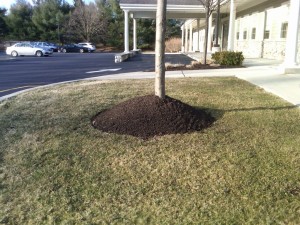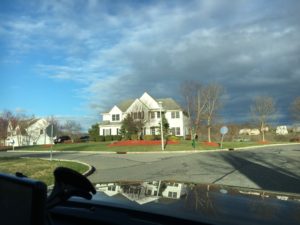Hello Fellow Readers,
Springtime is mulch time, and John from Andover, NJ, asked what kind of mulch is best. First and foremost, remember to apply only two to three inches of mulch and stay clear of trunks and stems to prevent disease (a polite way of saying no volcano mulch).
There was a trend to use cocoa mulch, which can be toxic to pets, and the sweet smell can attract wild animals, so best to stay clear. Then there’s the controversial dyed mulch, often made from recycled wood products such as wood pallets, old decks, and other construction debris, which can contain harmful chemicals. Plus, the impact of the dye itself covers up the mystery of the wood products used. Hence, dyed mulch is another stay-away as far as I’m concerned to keep plants healthy.
Why Cedar and Hemlock Mulch are the Best
I prefer cedar and hemlock mulch, which have fewer mold spores than other hardwood mulches and don’t break down as quickly. But is there a risk of spreading Hemlock Woolly Adelgid (HWA) using hemlock mulch? Hemlocks infected with HWA have a white powder on the foliage from the tiny insects that feed on the twigs at the base of the needles. It once devastated hemlocks, though the problem has dramatically improved, and thankfully, hemlocks are readily used in the landscape once again.
According to the University of Massachusetts Center for Agriculture, in cooperation with the USDA, “given that hemlock bark mulch is from the bark of the trunk and major branches, there should be limited or no adelgids present in those areas.” They go on to say, “Bark mulch should not be used as soon as it is made for a variety of reasons other than the HWA. If six months have passed from the time of manufacture, then a minimal movement of the adelgid would be expected onto another host.” The bottom line is hemlock mulch is safe and favorable to use.
Woodchips as mulch are best away from plants.
What about using the wood chips galore from the cleanup of the downed trees? Nature relies on decomposing limbs, trees, and leaves to build fertile soil. However, woody materials are high in carbon and cellulose and need nitrogen and time to decompose, temporarily depleting nitrogen from the soil. Therefore, I wouldn’t suggest mixing fresh wood chips directly on your ground. But if you combine wood chips with a high-nitrogen organic material such as dried blood or fish meal, they can be tilled into the top layer of the soil and will provide nutrients rather quickly.
Some say wood chips mulched around trees or shrubs are perfectly fine. They believe any nitrogen hindrance that might occur is limited to the soil surface and has virtually no negative impact on plants with deeper root systems. I don’t know; fresh wood chips around plants remind me of a garden under a drive-through menu. It is a step above tomato sauce red mulch, but not so pretty. Using wood chips to create a woodland path, a cushion under a play set, or paths between raised beds in your vegetable garden is better.
Garden Dilemmas? Askmarystone@gmail.com and your favorite Podcast App.
There’s more to the story in the Garden Dilemmas Podcast (a soothing 10 minutes):
Column updated 5/5/24







Hi Mary,
Thank you for your timely talk about mulch. Too bad we can’t circulate your article to some of the landscaping companies who have been volcano mulching in the county! I think they may be the worst of the bad mulchers (is that a word?) My rule of thumb has always been 3x3x3 for trees. 3 inches in depth, 3 inches away from the trunk, and mulch 3 feet out to the drip line. I use cedar mulch too. I like it the best.
Hello April, You are so right about many landscapers being guilty of volcano mulching. My theory is homeowners see them and copy “the professionals” thinking its the right thing. Yikes! I love your 3X3X3 rule. And as the tree matures, and the dripline expands the width of the canopy of the tree, we love adding herbaceous groundcovers rather than all mulch, don’t we? Thanks for sharing, Mary